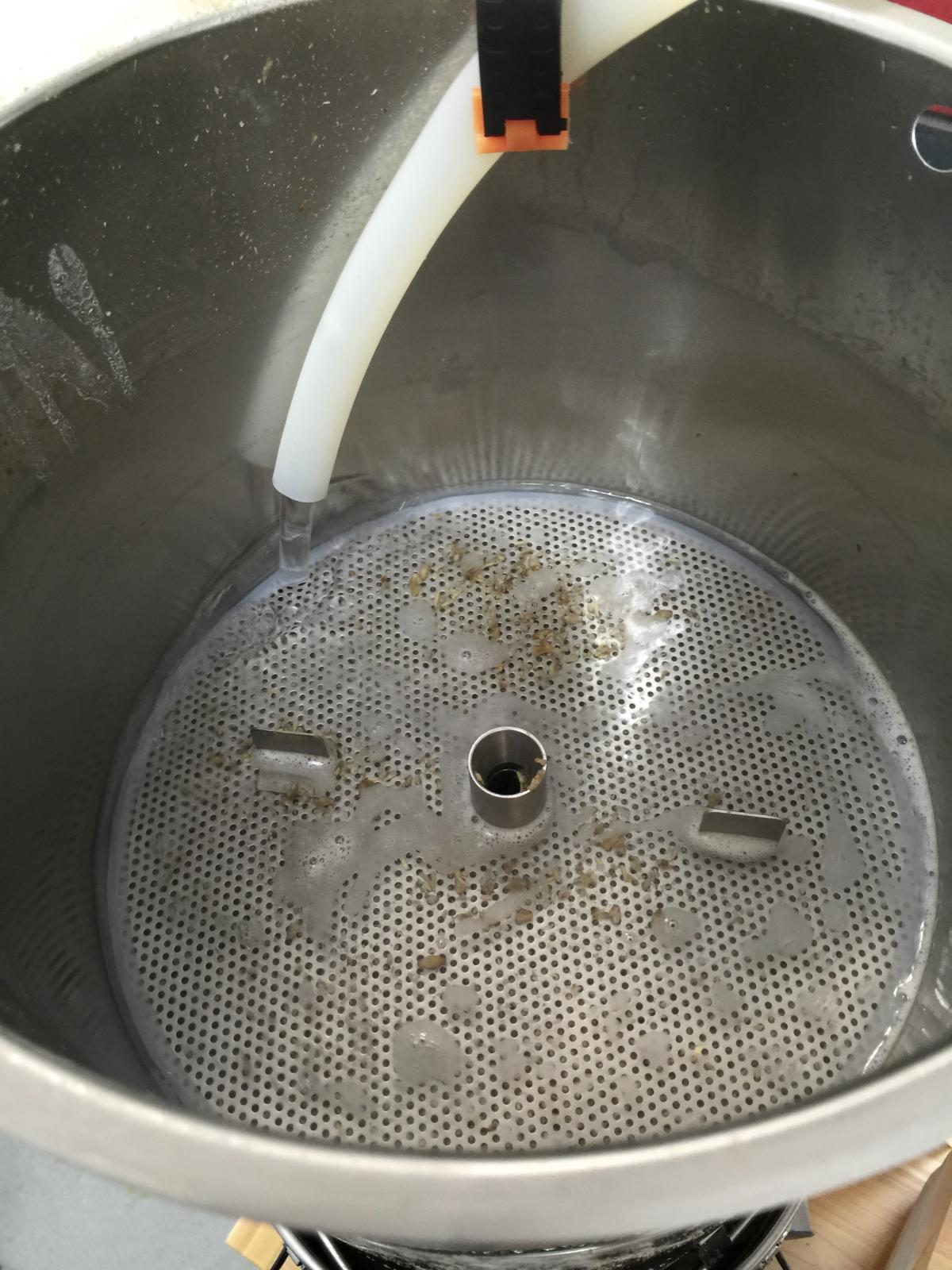I can't say I've noticed any. I figure that it would stop some grains from falling through, and I like the idea that all the recirc is going thru the grain bed. Its quite simple to operate this way, and fills my need to do something during the mash!

No I don't turn off the GF while doughing in. So long as on mash it won't overheat I figure. I'm trying to understand the above, did you wish to hit 150? (sounds like that based on what temp you were trying to attain on the outflow). If so, then it appears a strike of 158 would've been sufficient to land at 150, right? Small grain bill? I'd expect maybe +10-12 F on strike temp based on my notes from my last pre-GF brew (+12, 14# bill) but was about 1F high.
Not sure your own grain mill would change this so much- likely you'd grind it finer than LBHS. Questions that I think of are:
1) was bottom plate seated perfectly at bottom? i.e. rubber gasket in place and not folded over anywhere, was fully at bottom
2) Were you careful enough while filling the grain basket that no grains slipped in between basket and boiler?
3) may sound dumb, but did you have the grain stopper in place while filling?
4) lastly, if all above were good, did you allow wort to overflow during the recirc period of the mash? I know some will fall through if you don't, but not sure that would make up all of what you experienced. I control the valve to avoid this, most here I do not think practice this and have not complained about any adverse effects.
Nothing else I can think of, but maybe someone else can?















































![Craft A Brew - Safale BE-256 Yeast - Fermentis - Belgian Ale Dry Yeast - For Belgian & Strong Ales - Ingredients for Home Brewing - Beer Making Supplies - [3 Pack]](https://m.media-amazon.com/images/I/51bcKEwQmWL._SL500_.jpg)












